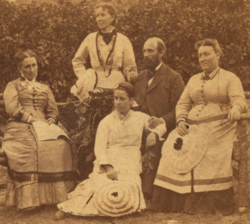
Colorado City is a town in Mohave County, Arizona, United States, and is located in a region known as the Arizona Strip. The population was 2,478 at the 2020 census. At least three Mormon fundamentalist sects are said to have been based there. A majority of residents and many local officials belong to the most prominent of these sects, the Fundamentalist Church of Jesus Christ of Latter-Day Saints, whose corporation also owned much of the land within and around the town until state intervention in the 2000s.
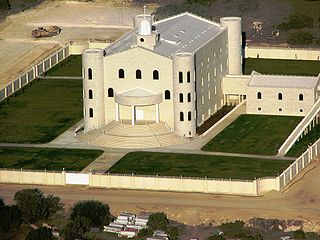
The Fundamentalist Church of Jesus Christ of Latter-Day Saints is a religious sect of the fundamentalist Mormon denominations whose members practice polygamy. It is variously defined as a cult, a sect, or a new religious movement.

Mormon fundamentalism is a belief in the validity of selected fundamental aspects of Mormonism as taught and practiced in the nineteenth century, particularly during the administrations of Joseph Smith, Brigham Young, and John Taylor, the first three presidents of the Church of Jesus Christ of Latter-day Saints. Mormon fundamentalists seek to uphold tenets and practices no longer held by mainstream Mormons. The principle most often associated with Mormon fundamentalism is plural marriage, a form of polygyny first taught in the Latter Day Saint movement by the movement's founder, Smith. A second and closely associated principle is that of the United Order, a form of egalitarian communalism. Mormon fundamentalists believe that these and other principles were wrongly abandoned or changed by the LDS Church in its efforts to become reconciled with mainstream American society. Today, the LDS Church excommunicates any of its members who practice plural marriage or who otherwise closely associate themselves with Mormon fundamentalist practices.
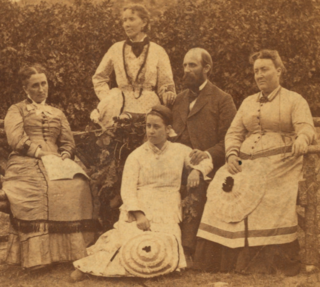
The Apostolic United Brethren (AUB) is a Mormon fundamentalist group that practices polygamy. The AUB has had a temple in Mexico since at least the 1990s, an endowment house in Utah since the early 1980s, and several other locations of worship to accommodate their members in the US states of Wyoming, Arizona, and Montana.

Rulon Timpson Jeffs, known to followers as Uncle Rulon, was an American polygamist and religious leader who served as the president of the Fundamentalist Church of Jesus Christ of Latter-Day Saints, a Mormon fundamentalist organization based in Colorado City, Arizona, United States, from 1986 until his death in 2002. He was the father of later FLDS Church leader and convicted felon Warren Jeffs.
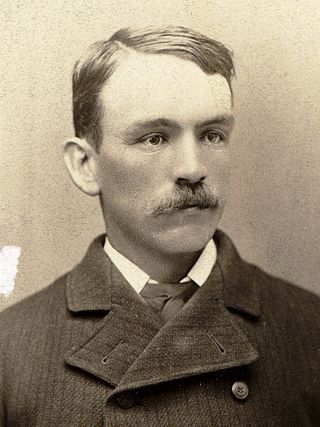
Lorin Calvin Woolley was an American proponent of plural marriage and one of the founders of the Mormon fundamentalist movement. As a young man in Utah Territory, Woolley served as a courier and bodyguard for polygamous leaders of the Church of Jesus Christ of Latter-day Saints in hiding during the federal crusade against polygamy. His career as a religious leader in his own right commenced in the early twentieth century, when he began claiming to have been set apart to keep plural marriage alive by church president John Taylor in connection with the 1886 Revelation. Woolley's distinctive teachings on authority, morality, and doctrine are thought to provide the theological foundation for nearly ninety percent of Mormon fundamentalist groups.

Leroy Sunderland Johnson, known as Uncle Roy, was a leader of the Mormon fundamentalist group in Short Creek, which later evolved into the Fundamentalist Church of Jesus Christ of Latter-Day Saints, from the mid-1950s until his death.

The Righteous Branch of the Church of Jesus Christ of Latter-day Saints, also known as The Righteous Branch, The Branch Church, The Peterson Group and Christ's Church, is a fundamentalist Mormon sect of the Latter Day Saint movement. It is based in Iron County, Utah.

The Short Creek raid was an Arizona Department of Public Safety and Arizona National Guard action against Mormon fundamentalists that took place on the morning of July 26, 1953, at Short Creek, Arizona. The Short Creek raid was the largest mass arrest of polygamists in American history. At the time, it was described as "the largest mass arrest of men and women in modern American history."

The term placement marriage refers to arranged marriages between members of the Fundamentalist Church of Jesus Christ of Latter-Day Saints. Placement marriage is believed and practiced by members of the FLDS Church to show their commitment and obedience in order to obtain salvation for themselves and their parents; it might be considered “the most visible outward symbol of members’ devotion."
Nathaniel Baldwin was an American inventor and industrialist, known for his improved telephonic earphone, among other inventions. He was also a supporter of the early Mormon fundamentalist movement.
Alma Adelbert "Del" Timpson, was an American Mormon fundamentalist leader. He was involved with a number of Mormon denominations, including the mainstream LDS Church, followed by the Council of Friends, and eventually heading the Centennial Park group, a fundamentalist sect headquartered in Centennial Park, Arizona. In each denomination, he held positions of importance within the priesthood and leadership structures.
The Centennial Park group is a fundamentalist Mormon group, with approximately 1,500 members that is headquartered in Centennial Park, Arizona. The Centennial Park group broke with Leroy S. Johnson, leader and senior member of the Priesthood Council of the Fundamentalist Church of Jesus Christ of Latter-Day Saints, in the early 1980s. There is no formal relationship between the FLDS Church and the Centennial Park community. The group is also known as the "Second Ward", "The Work of Jesus Christ" and "The Work".
The Church of Jesus Christ of Latter-day Saints and the Kingdom of God is a Mormon fundamentalist church in the Latter Day Saint movement. The sect was founded by Frank Naylor and Ivan Nielsen, who split from the Centennial Park group, another fundamentalist church over issues with another prominent polygamous family. The church is estimated to have 200–300 members, most of whom reside in the Salt Lake Valley. The group is also known as the Neilsen Naylor Group or the Third Ward.
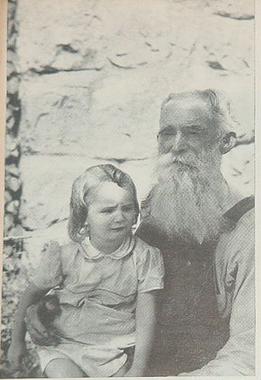
Joseph Smith Jessop was an early patriarch in the Mormon fundamentalist movement and, with John Y. Barlow, co-founder of Short Creek, Arizona, home to the polygynous Short Creek Community.

The Council of Friends was one of the original expressions of Mormon fundamentalism, having its origins in the teachings of Lorin C. Woolley, a courier and bodyguard for polygamous leaders of the Church of Jesus Christ of Latter-day Saints, who was excommunicated in 1924.
The Church of Jesus Christ Inc. is a Mormon fundamentalist denomination in the Latter Day Saint movement, and is also known as the Blackmore Group. There are approximately 700 members of this group.
Benjamin "Ben" Granger Bistline was an American historian of Mormon fundamentalism in Short Creek, a community of which he was a part.

